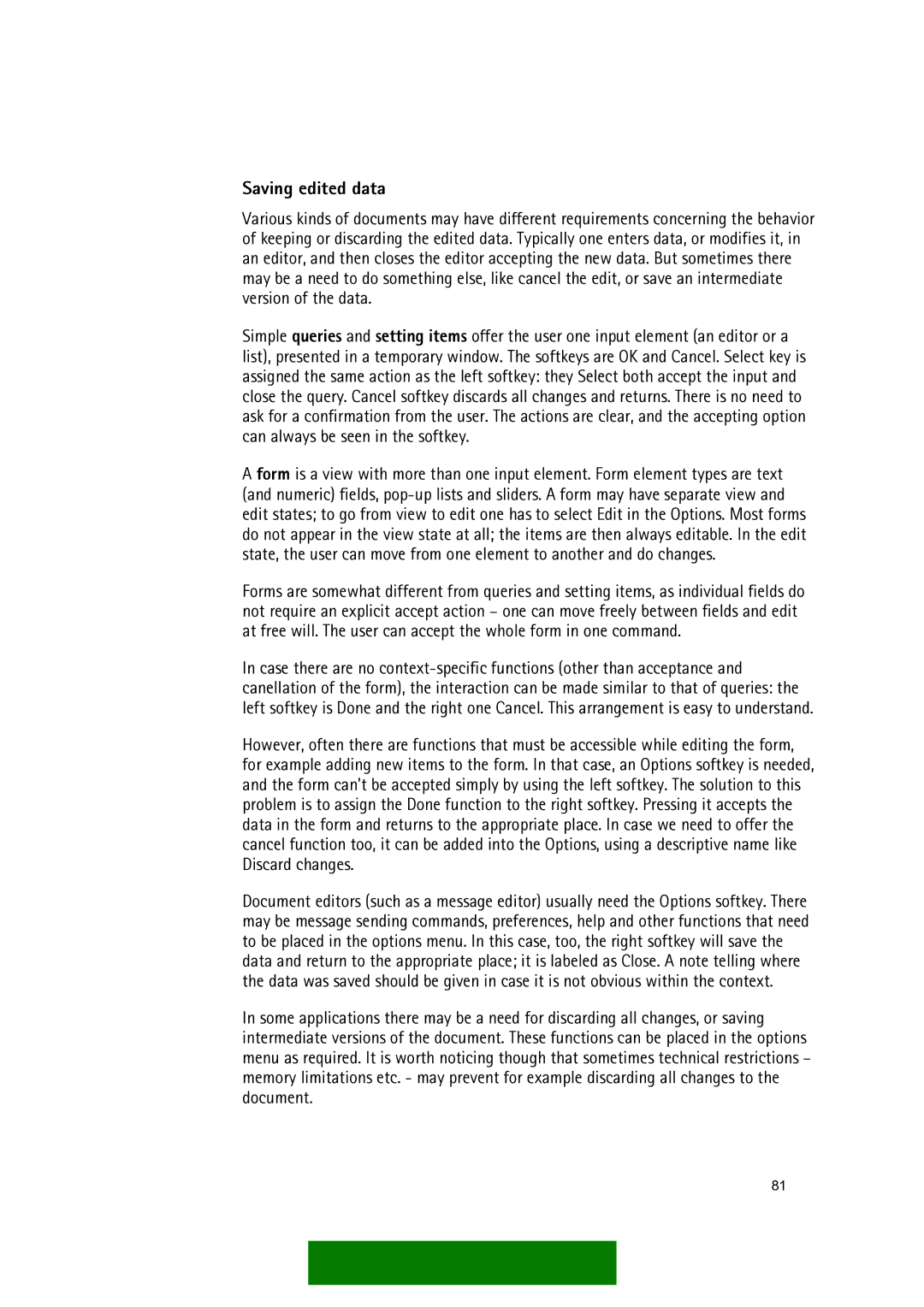Saving edited data
Various kinds of documents may have different requirements concerning the behavior of keeping or discarding the edited data. Typically one enters data, or modifies it, in an editor, and then closes the editor accepting the new data. But sometimes there may be a need to do something else, like cancel the edit, or save an intermediate version of the data.
Simple queries and setting items offer the user one input element (an editor or a list), presented in a temporary window. The softkeys are OK and Cancel. Select key is assigned the same action as the left softkey: they Select both accept the input and close the query. Cancel softkey discards all changes and returns. There is no need to ask for a confirmation from the user. The actions are clear, and the accepting option can always be seen in the softkey.
A form is a view with more than one input element. Form element types are text (and numeric) fields,
Forms are somewhat different from queries and setting items, as individual fields do not require an explicit accept action – one can move freely between fields and edit at free will. The user can accept the whole form in one command.
In case there are no
However, often there are functions that must be accessible while editing the form, for example adding new items to the form. In that case, an Options softkey is needed, and the form can’t be accepted simply by using the left softkey. The solution to this problem is to assign the Done function to the right softkey. Pressing it accepts the data in the form and returns to the appropriate place. In case we need to offer the cancel function too, it can be added into the Options, using a descriptive name like Discard changes.
Document editors (such as a message editor) usually need the Options softkey. There may be message sending commands, preferences, help and other functions that need to be placed in the options menu. In this case, too, the right softkey will save the data and return to the appropriate place; it is labeled as Close. A note telling where the data was saved should be given in case it is not obvious within the context.
In some applications there may be a need for discarding all changes, or saving intermediate versions of the document. These functions can be placed in the options menu as required. It is worth noticing though that sometimes technical restrictions – memory limitations etc. - may prevent for example discarding all changes to the document.
81
